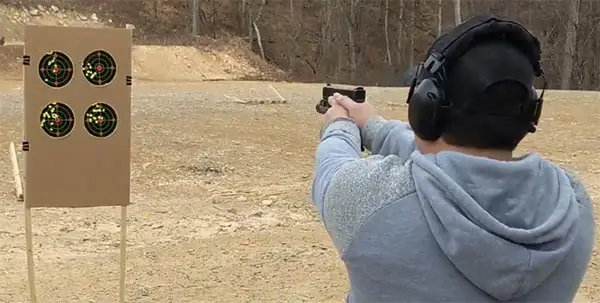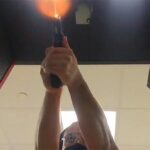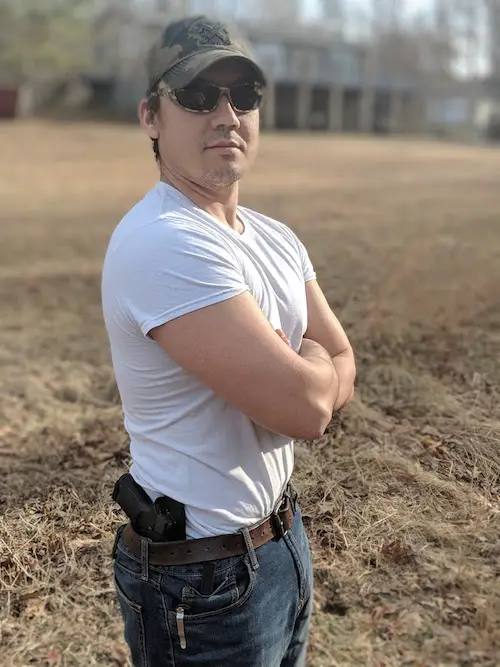Every shooter, regardless of skill, has dealt with flinching at some point. Oftentimes, this will manifest in shots that are low and left of the bullseye. However, experienced shooters may ride the recoil. For many the struggle to stop anticipating recoil is an ongoing journey. If you’re struggling with shot anticipation, here are the reasons why and some tools to help you fix the flinch.
Table of Contents
Shot Anticipation Is Natural
As I’ve mentioned, you aren’t the first person to have problems with anticipating recoil and you certainly won’t be the last. Rarely is the reason for shot anticipation “fear” of the firearm, despite what many shooters believe.
Fundamentally, there are two responses that you must overcome in order to defeat the flinch. First, you must train your mind to ignore the inevitable recoil. Mastering your mind will allow you to defeat the second response, which is the physical reaction.
Mental Aspect Of Shot Anticipation
Firing a handgun and feeling the recoil is a unique experience. Despite knowing that recoil itself is not dangerous, your body is programmed to naturally resist unpleasant experiences. Self preservation is the reason your muzzle dips or rises in advance of the recoil.
Beginner shooters oftentimes shoot better at the start of a session before they are conditioned to the recoil. However, as time progresses shot groups and placement tend to stray.
Their mind has now made the connection between squeezing the trigger and the recoil. For some shooters shot anticipation is a conscious reaction, while others anticipate the recoil subconsciously.
Physical Response To Mental Stimulus
Once the mind has drawn the equivalence between the shot and resulting kick, the body looks for a way to counteract the sensation. Fighting against the upcoming forces usually manifests as shots placement low and to the left. However, it can also result in shots high and to the left.
Because this reaction is often involuntary, it can be very frustrating. Therefore, you need to retrain your mind and body to overcome this natural behavior. The mentality of “let recoil happen” is the mantra often cited. However, this can be easier said than done. Below are a couple common problems associated with recoil anticipation and why they are occurring.
Why Am I Shooting Low and Left?
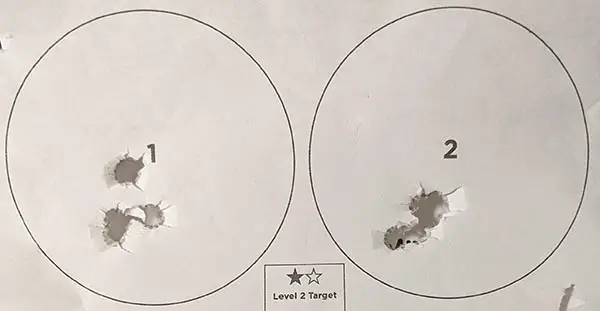
Ah, the age old question for correcting errant shot placement. If you’re a beginner, chances are the reason you are missing low & left on the target is because you’re anticipating the recoil and pushing the shot.
Pushing The Shot
Your shots are going low because your mind knows that the force of the recoil is going to result in the muzzle rising. However, the bullet has already left the barrel by the time you feel the handgun kick. Regardless, your bodies natural tendency is to fight against this, even before it occurs.
For right -handed shooters, the shot is going left because your shooting hand has better leverage than your support hand. Although the force may feel equal to you, your dominant hand is actually exerting greater force on the gun.
Thus, the motion of your hand gives the appearance that you are pushing the shot toward the target.
Why Are My Shots High & Left?
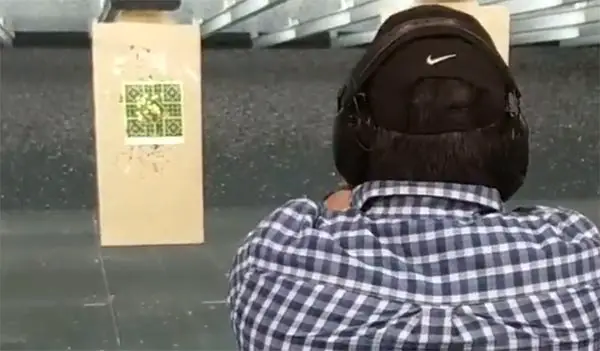
By far, shot groups low and left are the most common symptom of anticipating recoil. However, recoil anticipation is also sometimes characterized by shot groups high and left. How is it possible to have an inverse reaction for the same problem?
Instead of trying to fight the recoil, some shooters will actively “help” the gun along the path of recoil. A preemptive upward movement before the shot breaks is known as riding the recoil and is another form of recoil anticipation.
Riding The Recoil
Unlike shooters who push the shot with a pistol, those who ride the recoil are generally accustomed to muzzle flip. Therefore, they’ll aid the pistol in upward movement before the shot actually breaks. Thus, the shot placement is high.
Riding the recoil is most often found in experienced shooters. Oftentimes their dry-fire techniques are good but the introduction of live ammunition throws the fundamentals out the window.
How To Stop Anticipating Your Shot
Alright, so now you know what’s happening both in your mind and your body when you anticipate recoil. But, how do you fix this issue? Well, there’s several things — both mental and physical — that I use to try and alleviate shot anticipation. Some of these methods you’ve likely heard before. Just bear with me as I go through them and hopefully one of these tricks will help fix your flinch.
Ball and Dummy Drill To Diagnose Recoil Anticipation
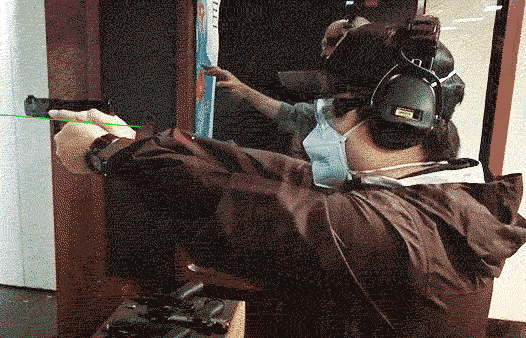
Ball and dummy drill. Riding the recoil train — and the look of disgust that follows. Watch the very front of the gun and you’ll see the bottom of the muzzle jerk up just above the green line.
The ball and dummy drill consists of loading an inert dummy round along with several live rounds into a magazine. You should have a partner do this to avoid knowing when the dummy round is loaded. Video yourself, preferably in slow motion, and see if your muzzle dips (or rises) when attempting to “fire” the dummy round.
Oftentimes, this drill is great for diagnosing the problem but not necessarily fixing the issue. However, it is also a good test to see if you have corrected your recoil anticipation problem. Even if you know shot anticipation is the problem, it can help you benchmark how drastic your reaction is and your development over time.
Dry Fire To Eliminate Anticipation
By now, you’ve probably read and seen everyone harping on dry-fire practice at home. This is because dry firing your gun is a cost effective method that helps with shot anticipation. If you cannot squeeze the trigger effectively without a cartridge, you won’t be able to do it with a live round.
If you have a tool like the Mantis X system, you can get live feedback on your muzzle movement. This tool is not only great for dry-fire, but also live-fire as well. While not necessary, it does help if you’re struggling with your dry-fire technique.
Similar to the ball and dummy drill mentioned above, I highly recommend video recording your dry-fire shots in slow motion with a focus on your hands. Practice this until you can reliably dry-fire without the muzzle dipping.
Slow Down Your Trigger Squeeze
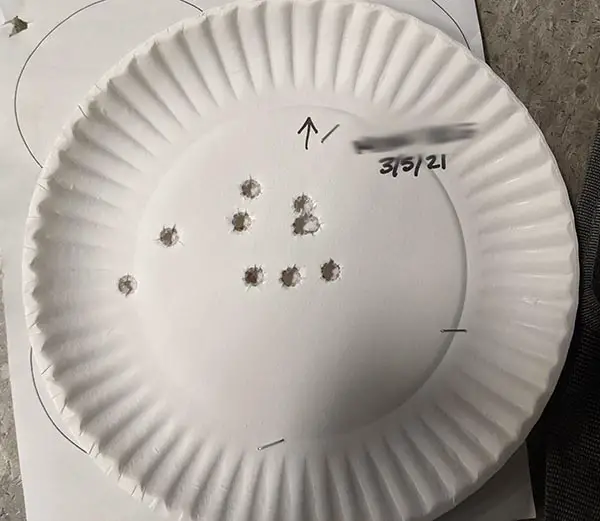
If your dry-fire technique is impeccable, then perhaps it’s time to focus on your reaction to live ammunition. However, to stop anticipating recoil you need to slow down your trigger squeeze — a lot. If you don’t know exactly when the trigger will break, you’re less likely to flinch.
One method to accomplish this is by having a buddy slowly count out loud. With each number you increase the pressure on the trigger until it finally breaks. The number is arbitrary but should be well beyond the count for when the trigger breaks. You can do this for yourself but seems more effective with another person doing the count.
Remember, that a good shot is going surprise the shooter. Generally, your inability to predict the shot will go hand-in-hand with accurate shot placement. This method of shooting is good for addressing both the mental and physical response to recoil anticipation.
Focus On Sight Stability, Not Shot Placement
For experienced shooters, or those really struggling with shot anticipation I will eliminate the target from the equation. After all, the problem isn’t with the sight picture or sight alignment. Instead I will focus on conditioning their mind to ignore the shot.
The key to this drill is focusing on sight alignment. Instead of worrying about where your shot will hit try to prevent the front sight from moving.
Throughout the trigger squeeze, you should be thinking “keep the front sight steady, maintain sight alignment.” Repeat this while you squeeze the trigger. Instead of worrying about sight picture or point of impact your attention is focused on keeping the muzzle still. Where the bullet hits is irrelevant if you are able to prevent the muzzle from dipping or rising prematurely.
Parting Shots
If you’re struggling with shot anticipation, go through each of the above steps. Start by diagnosing the problem. Then, spend time on each subsequent drill. Chances are, one of these will help facilitate a fix to your flinch. Do you have any recommendations or tricks that helped you overcome recoil anticipation? Leave a comment for the community. If you found this information helpful, please like and share to help out the site. Good luck and remember that perfect practice makes perfect.
